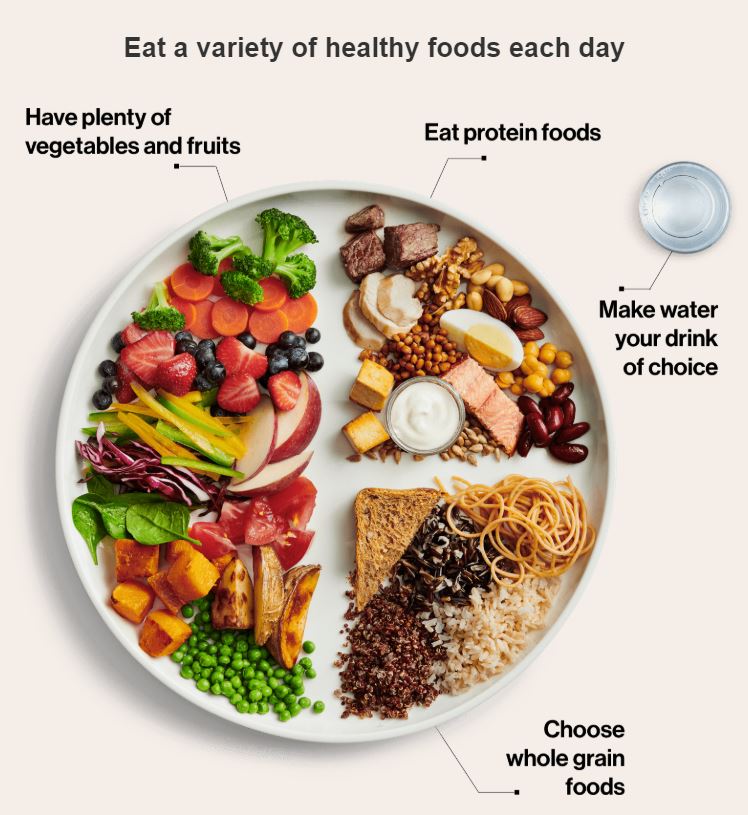Health experts have broadly come out in support of Canada’s revamped food guide, saying it represents a clear improvement over the 2007 version.

“This is a much better way of guiding Canadians in terms of how best to follow a healthy diet,” said Dr. David Lau, a professor of medicine and obesity researcher at the University of Calgary. Advocacy groups like the Canadian Medical Association and Heart & Stroke have also issued statements approving of the new guide.
Rather than telling Canadians to eat a specific number of servings from each of the four food groups, like the old guide, the new version released Tuesday says to eat a variety of healthy foods, including fruits and vegetables, whole grains and protein foods – and among those, to choose plant-based proteins like legumes and nuts more often.
The old food guide’s emphasis on food servings and portions was confusing, said Dr. David Jenkins, a professor in the departments of nutritional sciences and medicine at the University of Toronto. “Let me ask you, what is a serving of banana?”
If no one understood what it was saying, he said, “How is that a food guide then?”
Totally removing portion sizes from the guide – though it may appear in later documents designed for health professionals – is something that Lau isn’t sure about though. “If anything, that’s about the only negative comment that people can make about this food guide: that they don’t talk about portion sizes.”
A picture of a plate, with one half containing fruits and vegetables, one-quarter protein and one-quarter whole grains is a central feature of the new food guide. Lau worries that some people could just add more fruits and vegetables to their plate, without reducing the protein and grain servings, and so make a much bigger meal.
Registered dietitian and lactation consultant Jessica Coll, who participated in the launch of the new food guide, isn’t so sure.
“Because portions are so specific to each person, I think it’s not a bad thing not to include them.”
People eat different amounts based on their size, how often they eat during the day, and how active they are, she said, so telling someone they have to eat a specific portion or number of servings is tricky.
WATCH: Health minister unveils Canada’s new food guide

Lau thinks some general advice, like using your fist to measure an approximate serving of grain, might be helpful.
Protein foods
He also thinks that making dairy and red meats simply one of many protein choices is a good move, not least because it makes the food guide’s recommendations more applicable to Canada’s ethnically-diverse population.
“Don’t forget there are some populations where dairy products are not prominent as part of their daily food consumption.”
“I love the variety of foods that are included in the new food guide from different cultures,” Coll said.
The arrangement of bright, fresh foods on the example plate has another drawback though: it’s not cheap to eat fresh vegetables and meat all the time.
“It’s more expensive, there is no question,” Lau said.
Food Secure Canada said in a statement that the guidelines are an important first step to addressing poverty and food insecurity in Canada, but that further steps, like school food programs and a comprehensive food policy for Canada, would ensure that healthy food is accessible to all.
Coll suggests that frozen vegetables and dried beans are healthy and affordable options that would fit within the guide’s recommendations.
WATCH: How to survive on a vegan diet

Home cooking
Health professionals also like the new food guide’s recommendations to cook more often and eat meals with others. Eating with your family forces you to slow down a little, said Lau.
“Many people just gulp down the food or inhale the food, so food becomes instead of being a source of energy, it becomes a way of just filling somebody’s tummy so they can go on to do other things.”
READ MORE: Canada’s new food guide trims down on dairy — should you?
More home cooking also means less take-out and restaurant meals – something Lau said contributes to weight issues.
Coll agrees. “It can help support healthy eating, just because the foods that are chosen tend to be more nourishing because they’re not buying foods at restaurants or buying more processed foods.”



Comments